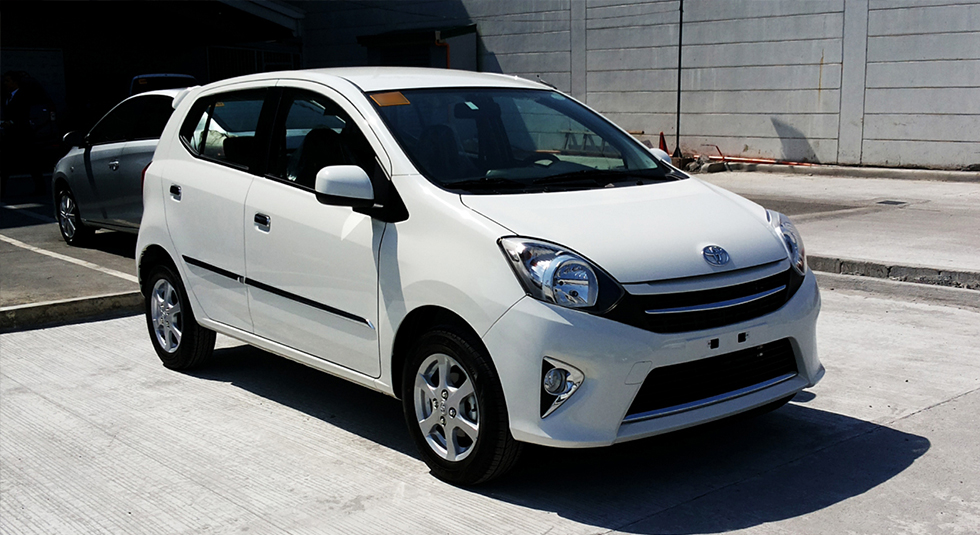
Driving is a way of life. Every day, millions of people in the Philippines get in their car and make their way through the seemingly endless traffic everywhere to get to work. The roads can be frightening, too, as it is filled with large vehicles like buses and trucks, not to mention that there jeepneys and motorcycles always swooping out of nowhere as well.
This reason is why compact vehicles like the Toyota Wigo were created—small build with an engine just as effective as any other car, to allow for easy gliding through the overwhelming number of vehicles that are encountered on a daily basis.
Of course, the Wigo isn’t the only car of its kind. There are other similarly designed vehicles as well and can provide the same functionalities as the Wigo. It can be said that in the end, it all boils down to the user’s brand preference, but in reality, no two cars aren’t exactly alike—one will be superior in some aspects, and so will the other. How in the world are you going to decide between two cars which are apparently the same?
Car Wars, of course. The one and only!
In this episode, we’ll be featuring the Toyota Wigo, and on the opposite side is the Suzuki Celerio—two small (but amazing) hatchback-type cars, and prominent models of their respective companies in the modern day.
Truly, they are strikingly similar cars, but which one stands out when they are put side by side? Well… Only Car Wars can answer that.
Anyway, they aren’t going to do this by themselves, so let’s get this battle underway—three, two, one, fight!
First Round: The Exterior

Admit it, the very first reason why we stare at a sports car when we see one isn’t its powerful engine, but its appearance. Whether you are a car enthusiast or not, you can’t deny that a car’s exterior contributes greatly in that “wow” factor.

Above are the only notable differences between the exteriors of the Wigo and the Celerio. The Wigo has a slightly larger tire size, but the main area of concern here should be the fog lights and the power adjustable exterior rear-view mirrors.
Fog lights make it safer for the Celerio to navigate in dark environments, while the Wigo’s power adjustable mirrors make it much easier to adjust the side mirrors if needed, with just a few buttons on the dashboard.
This round is too close to call, but we’ll continue on with the interiors and the engines and see what happens from there.
Second Round: The Interior

What makes the interior of cars important? Simple: it’s where you’ll spend 90% of your time with your car in (the other 10 being car wash sessions and admiring your car), and where you will do the actual driving.
That said, the interior of a car should be extremely comfortable, and all the important features of the car should be accessible from the driver’s seat. How enjoyable a long drive is can depend heavily on how a car’s interior is designed, the materials used in making it, and the technology implemented in its manufacturing.
Toyota Wigo
The Toyota Wigo is a small car—that much is obvious when you look at one, but space is not an issue at all when you get inside. There’s enough space to sit comfortably for extended periods of time and move around with ease.
The air conditioning of the Toyota Wigo functions perfectly, able to keep the entire car at constant and comfortable temperatures, and thanks to its small frame, it won’t take as long as it would on larger vehicles to cool the interior.
To those who would prefer to keep their windows open and enjoy the breeze, it also isn’t a problem as the Wigo comes with power windows, which can be opened or closed with just a few button presses. The Wigo also comes with a touch-integrated music player which can play tracks from USB or auxiliary devices, as well as from radio stations. Throw in the music controls mounted on the steering wheel, and you’ve got yourself a great experience driving while singing to the tracks in your playlist.
Suzuki Celerio
Despite being smaller than most cars, you simply can’t write off the Celerio, thanks to its amazing interior. Comfort and convenience is not a problem, and you won’t have to worry about having a bad driving (or riding) experience in this hatchback.
Like the Toyota Wigo, the Suzuki Celerio has a powerful air conditioning system that can keep the car cool and cozy, regardless of the number of passengers—forget about sweating inside your car.
It also comes with a touch-integrated music player that can play music from USB and auxiliary devices, as well as a CD player—which is great for all the people who love collecting physical copies. Like with any other car, the Celerio can also play music from radio signals, so you don’t have to worry if you happened to forget to bring your music with you.
Final Round: The Engine
If all you wanted to do was sit down while listening to music while sipping a cup of coffee, you could have done that in your living room. However, you wanted something that could allow you to do these while taking you from point A to point B, and the latter is impossible without a car.
And without an engine, a car isn’t a car.
Before anything else, let’s eliminate everything that both cars have in common:
- A 5-speed gearbox
- 3 cylinders, with 4 valves for each one
- An engine displacement of 998
- Both run on petrol
Aside from these, the two have very minor differences, which are listed below:

The fuel tank capacity can be neglected, because in a realistic situation, you won’t be filling your fuel tank to its maximum capacity then drain it all the way down to zero.
The deciding factor here is the torque of both vehicles. The Toyota Wigo is more powerful, but more horsepower doesn’t always make one car faster than another. There is also the matter of the weight, in which the Wigo is very slightly victorious against the Celerio—by being 10 kilograms lighter.
And the Winner Is…
This was an insanely close match, but in the end, the Toyota Wigo comes out on top. Both can provide a comfortable and enjoyable driving experience, are excellent for city drives, and are fuel efficient, but long drives on relatively high speeds is where the Wigo edges out its competitor.
The higher the gear and the speed of a car, the less fuel it consumes. Both are already known to be fuel efficient on their own, but the power of the Wigo’s engine takes it a step further, even if by just a little.
So, small car suitable for navigating through heavy traffic AND for long drives on empty roads? Go for a Wigo.
Contact us
Whether you're interested or would like to clarify more details, we're here to hear your thoughts out.
